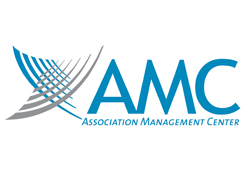
Ask the Management Team - Question of the Quarter
On a quarterly basis, we will ask our more than 20 executive level leaders (our Management Team) to provide their insights on a pressing question for the association industry. Here's our first question and answers from a subset of our leadership.
What is the issue that will affect the association industry the most (either positively or negatively) over the next decade?
Karen Nason, Account Executive/Executive Director, Association of Rehabilitation Nurses
I think the continued stagnating economy will challenge most segments of the association industry. Without an increase in discretionary spending dollars for consumers, nonprofits and commercial entities are all vying harder and harder for the same dollars. We see this in my association where employers are not paying for membership, continuing education, or other resources. The professionals in our target market have to pay for these things out of their own pocket. We talk so much in the association community about providing value to members and customers, and we all try to do just that. However, the cost to create a great offering often makes the end product too expensive.
Phil Saigh, Account Executive/Executive Director, American Academy of Pain Medicine
I believe “relevance” will continue to be a critical issue for associations. Many of the offerings that once made associations distinctive (information, networking with peers, and a chance to participate/ volunteer) are now available through so many other means…often without a dues invoice attached. I believe that associations are being forced to confront this reality or risk losing relevance. And while I don’t pretend to know what associations should do in this “brave new world,” I believe that one of their core strengths has always been to gather and convene parties with similar interests… and therein, perhaps, lies their continued relevance.
Marilyn Jansen, Director of Marketing & Business Development
The retirement of the baby boomers is perhaps the most significant issue that will affect the association industry the most over the next decade. It has been reported that 70% of association members will retire by 2021 – that is only 6 years away and that 62% of board members are over the age of 50. With that said, the 80 million boomers in the workforce are keeping associations alive. The 100 million Millennials are in place to step in and fill the void but associations have to think differently to attract and engage these individuals. For example:
- There needs to be more of a personal invitation to attract younger members because they hate to be sold to, are in debt, want relationships and don’t join out of obligation.
- They want tangible career development; 60% of Millennials are unemployed/underemployed and they are tens-hundreds of thousands of dollars in college loan debt. They want to develop practical work/career skills that were not taught in college and many feel their degree has little value.
- Because of being underemployed and in debt, they desire cost savvy engagement options.
- They want micro volunteer opportunities because they do not live to work like the Boomers did.
- They want rapid board involvement because they are capable and will not wait around until they have “paid their dues” like the Boomers.
- They want technology: mobile friendly access, collaborative social media, on demand entertaining education.
- They do not want to be marginalized as being young.
This situation can be a negative or a huge opportunity if association professionals have the courage to think differently. I prefer to think of this as an opportunity but we can’t keep on doing it like we always have if we plan to survive!
Michael Bourisaw, Director of Professional Relations & Development
How can associations stay relevant to a changing workforce that seeks information in different ways and who may not value the current membership model?
Joan Kram, MBA BSN CAE, Account Executive/Executive Director, American Association of Neuroscience Nurses, American Board of Neuroscience Nursing, and International Transplant Nurses Society
The generational transition from boomers to next presents both opportunities and challenges for organizations. The preferred communication channels have already shifted and will continue to shift. The challenge of effectively communicating and engaging members of all generations will continue to impact organizations (positively, negatively or both depending on how an organization approaches the challenge.)
Stephanie Mercado, CAE, Account Executive/Executive Director, National Association for Healthcare Quality
The pace of technical change will affect associations tremendously, particularly because associations are generally not well funded to keep up with technical innovation (through IT itself or staff competencies to be on the leading edge) and because outdated governance models enable a slow and political decision making process that limits change and innovation.
Steve Smith, MS CAE, Account Executive/Executive Director, American Academy of Hospice & Palliative Medicine
Increasing diversity within our member communities and professions offers both the greatest challenge and opportunities for associations. The days of “one size fits all” member programs and services are nearly behind us. We need to find new ways to attract and engage people based upon who they are and what they need. That requires association leaders to be nimble, sensitive and welcoming to members with various identities – both personal and professional. Our in-person events and online presence should reflect greater choice, customization and appeal to people early and late in their careers as well as those who are often overlooked, underserved and therefore, unrepresented.
Do you have any thoughts you'd add to what our Management Team had to say? If so, please take a moment to comment on the post on our Facebook page.


